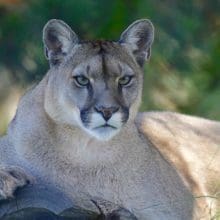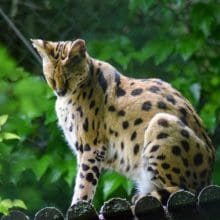How Can We Protect Jaguars in Their Natural Habitat?
Protect Jaguars:
Preserving the Majestic Jaguars: Unveiling the Urgent Need to Protect
Protect Jaguars: The jaguar, scientifically known as Panthera onca, is a majestic and powerful big cat that roams the forests, grasslands, and swamps of the Americas. With its distinctive coat pattern and strong build, the jaguar is an iconic symbol of the wild. However, this magnificent species is facing numerous threats that put its survival at risk. In this article, we will explore the challenges faced by jaguars in their natural habitat and discuss effective strategies to protect them.
The Importance of Jaguars in Ecosystems
Protect Jaguars: Jaguars play a crucial role in maintaining the balance of ecosystems they inhabit. As apex predators, they regulate prey populations, preventing overgrazing and maintaining biodiversity. Their presence also helps control the spread of diseases among prey species. Furthermore, jaguars are considered umbrella species, meaning that their conservation indirectly benefits a wide range of other species that share their habitat.
Threats to Jaguar Populations
Despite their ecological importance, jaguars face numerous threats that have led to a decline in their populations. Some of the key challenges include:
- Habitat Loss: Deforestation and habitat fragmentation due to human activities, such as agriculture, logging, and infrastructure development, have significantly reduced the available habitat for jaguars.
- Poaching: Jaguars are often targeted by poachers for their beautiful fur, which is highly valued in the illegal wildlife trade. Additionally, their body parts are sometimes used in traditional medicine.
- Conflict with Humans: As human populations expand into jaguar territories, conflicts arise. Jaguars may prey on livestock, leading to retaliatory killings by farmers and ranchers.
- Climate Change: The impacts of climate change, such as altered rainfall patterns and increased frequency of extreme weather events, can disrupt jaguar habitats and reduce their prey availability.
Protect Jaguars: Conservation Strategies for Jaguars
Protecting jaguars requires a multi-faceted approach that addresses the various threats they face. Here are some effective strategies that can help safeguard their natural habitat:
1. Establish Protected Areas
Creating and effectively managing protected areas is crucial for preserving jaguar habitats. These areas should be large enough to support viable populations and connected through wildlife corridors to allow for genetic exchange. Strict enforcement of regulations within protected areas is essential to prevent illegal activities, such as logging and poaching.
2. Promote Sustainable Land Use Practices
Encouraging sustainable land use practices can help reduce habitat loss and fragmentation. This includes promoting agroforestry, which combines agriculture and forestry, as well as supporting initiatives that promote responsible logging and infrastructure development. By integrating conservation into land use planning, we can minimize the negative impacts on jaguar habitats.
3. Combat Poaching and Illegal Wildlife Trade
Efforts to combat poaching and the illegal wildlife trade are crucial for protecting jaguars. This involves strengthening law enforcement, increasing penalties for wildlife crimes, and raising awareness about the importance of preserving these magnificent creatures. Collaboration between governments, NGOs, and local communities is essential to effectively tackle this issue. and Protect Jaguars.
4. Implement Human-Jaguar Conflict Mitigation Measures
To reduce conflicts between humans and jaguars, it is important to implement measures that help mitigate these conflicts. This can include providing compensation for livestock losses, promoting the use of predator-proof enclosures, and implementing early warning systems to alert farmers and ranchers about jaguar presence. Education and awareness programs can also help foster coexistence between humans and jaguars.
5. Address Climate Change Impacts
Addressing the impacts of climate change is crucial for the long-term survival of jaguars. This involves reducing greenhouse gas emissions through sustainable practices, protecting and restoring carbon-rich habitats, and implementing climate adaptation strategies. By safeguarding the ecosystems on which jaguars depend, we can help them withstand the challenges posed by a changing climate and Protect Jaguars.
Conclusion
Protect Jaguars: Jaguars are not only charismatic and beautiful creatures, but they also play a vital role in maintaining the health and balance of ecosystems. Protecting them requires a comprehensive approach that addresses the various threats they face, including habitat loss, poaching, human-jaguar conflicts, and climate change. By establishing protected areas, promoting sustainable land use practices, combating poaching, implementing conflict mitigation measures, and addressing climate change impacts, we can ensure the long-term survival of jaguars in their natural habitat. It is our responsibility to act now and protect these magnificent big cats for future generations to admire and appreciate.
Read More About Jaguars From Wikipedia




